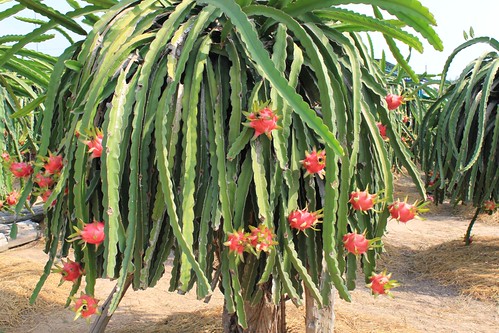
(Photo by daria_weber)
Moving away from animals for a while, this post will look at a plant that is familiar to most of us, and is linked to dragons by name.
"Dragon fruit" is the market name for the large, edible fruits of several species of cactus. In their native range of Central and South America, they are typically called sweet pitaya. In Southeast Asia, however, the local name for the fruit reflects some sort of association with dragons.
Chinese: 火龙果 ('fire dragon fruit') and 龙珠果 ('dragon pearl fruit');
Vietnamese: thanh long ('sweet dragon');
Bahasa Indonesia & Bahasa Malaysia: buah naga ('dragon fruit');
Laotian: mark mang gohn (ໝາກມັງກອນ) ('dragon fruit');
Thai: kaeo mangkon (แก้วมังกร) ('dragon crystal');
There are 3 species commonly found in the trade.
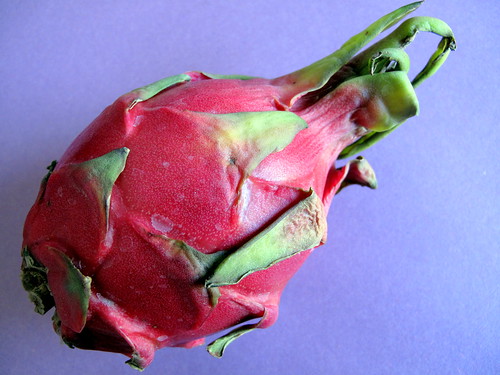
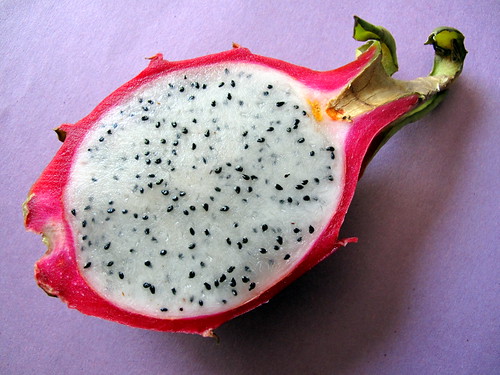
(Photos by chris 9)
Red pitaya (Hylocereus undatus) is the most common form in cultivation, and is grown both as a fruit crop and as an ornamental vine. The fruits have red skin with white flesh. It's so widely distributed across the tropics that its original native habitat is unknown, although it's likely to have come from somewhere in Central America. It may be the result of hybridisation between 2 wild species of Hylocereus.
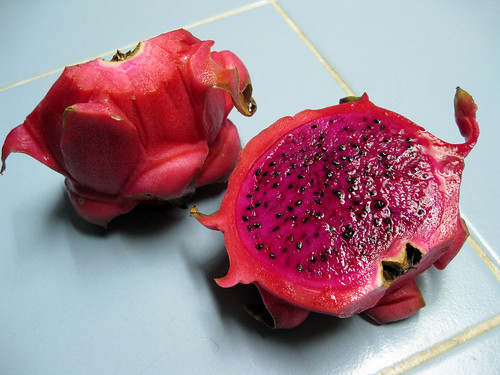
(Photo by Matt Molloy)
The Costa Rica pitaya (Hylocereus costaricensis) is found from Guatemala to northeast Peru, and bears fruits which have red skin and purple flesh.

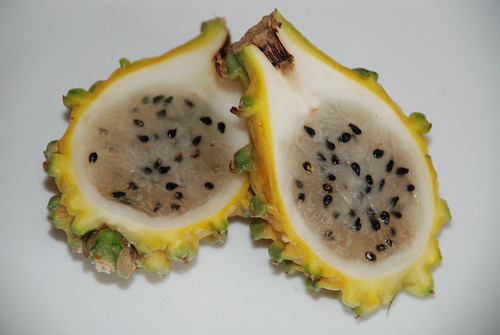
(Photos by craigiest)
Yellow pitaya (Hylocereus megalanthus) is found in South America, in Venezuela, Colombia, Ecuador, Peru, and Bolivia. As its name suggests, the fruits have yellow skin and white flesh.
Pitaya plants themselves are vine-like cacti, which grow not in the desert, but in tropical forests with moderate rainfall. In the wild, they climb or clamber on trees, and produce aerial roots that help in securing a foothold on tree trunks as the pitaya plant reaches for whatever sunlight filters through the dense canopy.

(Photo by 3Point141)
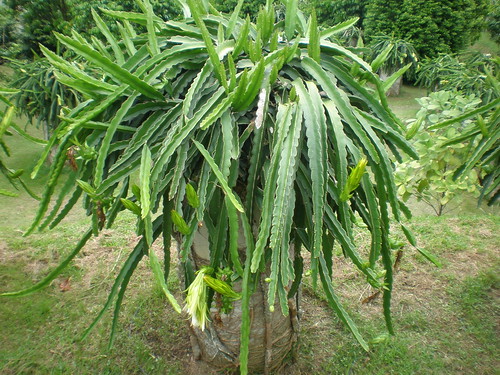
(Photo by ccj004)
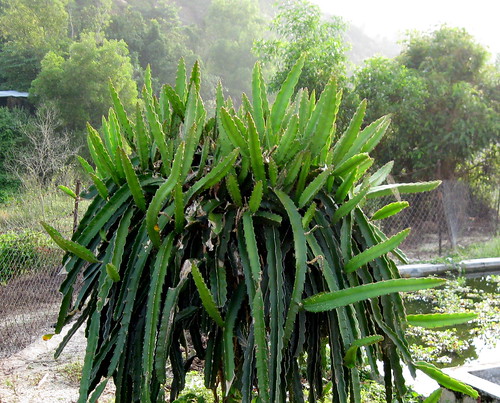
(Photo by peipei15)
Pitaya can also be grown indoors as a houseplant. They grow easily in moist, well-drained soil, and do well with warm temperatures and plenty of sunlight.
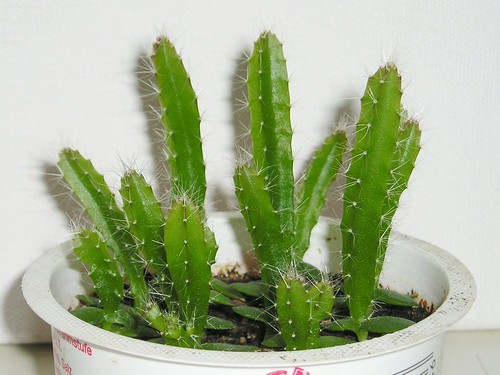
(Photo by blumenbiene)
The large flowers are white, fragrant, and bloom at night. It's no surprise that bats are among the most important pollinators of pitaya flowers, although bees may also pollinate those flowers that are still in bloom during daylight hours. The flowers can be eaten, or steeped and used to brew tea.

Flower of red pitaya;
(Photo by .Krol.)

Flower of Costa Rica pitaya;
(Photo by frank_ou)

Flower of yellow pitaya;
(Photo by blue foot)
Today, Vietnam is one of the most important growers of dragon fruit in Southeast Asia, although pitaya are cultivated in most countries throughout the region.

(Photo by freckles_the_cat)

(Photo by jpg-ana)
Dragon fruit is said to have a lot of health benefits; they're low in sugar, and red-skinned pitayas are a good source of Vitamin C. Dragon fruit is rich in fiber and minerals such as phosphorus and calcium, with red pitayas being richer in the former, and yellow ones having more of the latter. They also contain significant quantities of antioxidants. However, consuming significant amounts of red-fleshed dragon fruit, such as that of the Costa Rica pitaya, may result in pseudohematuria, a harmless reddish discoloration of the urine and faeces.
While plants traditionally associated with Chinese New Year festivities such as lucky bamboo (Dracaena sanderiana) and kumquat (Citrus japonica) remain highly popular, dragon fruits have apparently seen an upsurge in demand this year, no thanks to it being the Year of the Dragon. Some people even go to the extent of purchasing their own pitaya plants to grow at home. Of course, that the most common dragon fruit varieties are reddish in colour is a factor that contributes to this demand to have dragon fruits or pitaya plants at home.
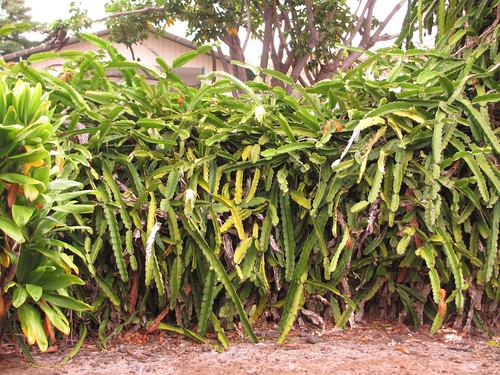
(Photo by mmmavocado)
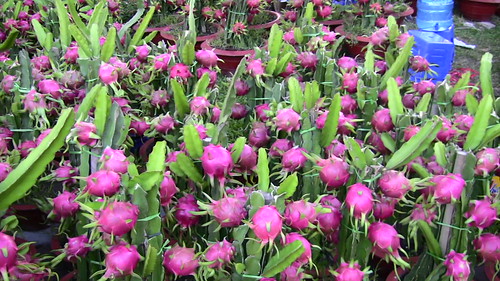
(Photo by roba66)
At the very least, one hopes that these pitaya plants don't all end up dying from neglect, which is probably going to be the case with many pet chinchillas or lizards.